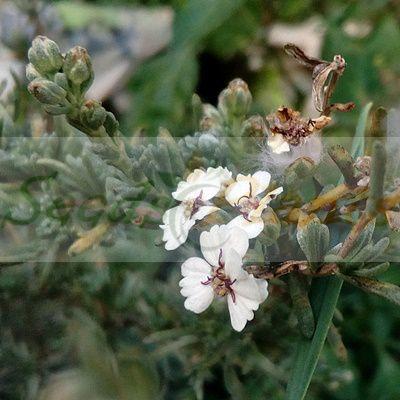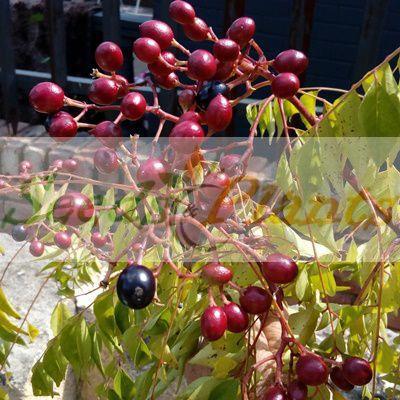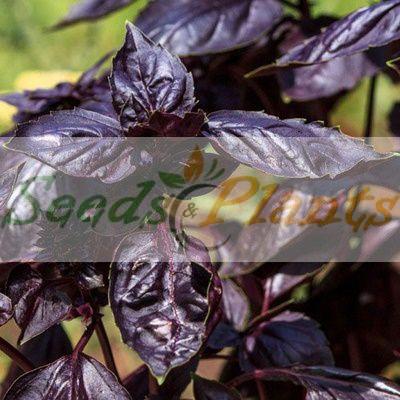🍃 Culinary Quick Facts
Culinary Info
- 🍽️ Culinary Use: Baking, Chutneys, Dips, Flavoring, Pickling, Sauces, Spice Blends
- 😋 Flavor Profile: Earthy, Mild Peppery, Nutty, Slightly Bitter
Medicinal Info
- 🌿 Medicinal Part: Seed
- 🍵 Herbal Preparation: Infusion / Tea, Ointments/Creams, Paste, Poultice, Powder
- ⚕️ Healing System: Ayurvedic System of Medicine, Siddha System of Medicine, Unani System of Medicine
Growth Traits
- 🌱 Life Cycle: Annual
- 🦋 Pollinator Method: Attracts Bees, Attracts Beetles, Attracts Butterflies, Attracts Wasps
- 🪴 Growth Habit: Bushy, Upright
- 🌸 Flower Color: Blue, Pink, White
Growing Requirements
- 🌞 Sun Exposure: Full Sun, Partial Shade
- 💧 Water Needs: Avoid Overwatering, Moderate Water
- ☀️ Growing Conditions: Drought Tolerant
- 🟤 Soil Preference: Clay, Loam, Sandy, Well-Drained
Black Cumin – 20 Seeds
(Nigella Sativa)
R30.00
In addition to its culinary use, Black Cumin it’s very popular in various traditional medicine like Unani, Tibb, Ayurveda & Siddha.
Common Names: Black caraway, black seed, black cumin, fennel flower, nigella, nutmeg flower, Roman coriander, black onion seed and kalonji.
Indoor Sowing: Not Recommended.
Direct Sowing: Autumn and Early Spring.
In stock
🍃 Culinary Quick Facts
Culinary Info
- 🍽️ Culinary Use: Baking, Chutneys, Dips, Flavoring, Pickling, Sauces, Spice Blends
- 😋 Flavor Profile: Earthy, Mild Peppery, Nutty, Slightly Bitter
Medicinal Info
- 🌿 Medicinal Part: Seed
- 🍵 Herbal Preparation: Infusion / Tea, Ointments/Creams, Paste, Poultice, Powder
- ⚕️ Healing System: Ayurvedic System of Medicine, Siddha System of Medicine, Unani System of Medicine
Growth Traits
- 🌱 Life Cycle: Annual
- 🦋 Pollinator Method: Attracts Bees, Attracts Beetles, Attracts Butterflies, Attracts Wasps
- 🪴 Growth Habit: Bushy, Upright
- 🌸 Flower Color: Blue, Pink, White
Growing Requirements
- 🌞 Sun Exposure: Full Sun, Partial Shade
- 💧 Water Needs: Avoid Overwatering, Moderate Water
- ☀️ Growing Conditions: Drought Tolerant
- 🟤 Soil Preference: Clay, Loam, Sandy, Well-Drained
Black Cumin (Nigella Sativa) Seeds. Also known as black seed, Kaljoni, Fennel Flower and Love in a mist, it belongs to the buttercup family of flowering plants and is an annual plant. Nigella blooms in the summer with blue, pink or white flowers and have feathery leaves. It grows up to 30 cm tall and produces a fruit with seeds that are used as a flavorful spice in many cuisines.
In addition to its culinary use, Nigella is known for its medicinal properties. In fact, its use can be traced back several centuries as a natural remedy for everything from bronchitis to diarrhea. It is very popular in various traditional systems of medicine like Unani and Tibb, Ayurveda and Siddha.
N. sativa is native to Southern Europe, North Africa and Southwest Asia and it is cultivated in many countries in the world.
Common Names: Black caraway, black seed, black cumin, fennel flower, nigella, nutmeg flower, Roman coriander, black onion seed and kalonji.
Black Cumin Culinary Uses
- Nigella seeds have a strong aroma and taste that have notes of onion, oregano, and black pepper.
- Nigella seeds are found frequently in Indian, Middle Eastern, and North African cuisines, in curries and lentil dishes alike.
- Nigella seeds goes well with root vegetable dishes as well as squashes such as spiced butternut squash.
- It can be added to stir-fries.
- A common use of nigella is in bread and pastries.
- It is also used a a garnish on a salad for an extra crunch.
Black Cumin Medicinal Benefits
- The seeds of N. sativa are widely used in the treatment of various diseases like bronchitis, asthma, diarrhea, rheumatism and skin disorders.
- Nigella seeds also have an antihistamine element and can aid in assisting with sore throats.
- It is also used as liver tonic, digestive, anti-diarrheal, appetite stimulant, emmenagogue, to increase milk production in nursing mothers, to fight parasitic infections, and to support immune system
Growing Black Cumin
Indoor Sowing: Not Recommended.
Direct Sowing: Autumn and Early Spring.
- Sow seeds directly into the garden bed. Pat the soil gently to hold the seeds in place.
- Cover the seeds very lightly with soil, as they need light to germinate.
- Keep the soil consistently moist, but not soggy, during germination.
- Germination typically takes 10-14 days at a soil temperature of 16-18°C .
- Flower takes place about two to three months later.
- Need Full sunlight and soil with good drainage. Soil pH 6 to 7.
- Can survive in dry soils, but regular watering during prolonged dry periods is recommended.
Can this plant be used for culinary purposes?
Black Cumin is traditionally used for culinary purposes such as baking and chutneys.
Does this plant have medicinal uses?
Traditionally, Black Cumin has a history of use in various healing systems, including Ayurvedic System of Medicine and Siddha System of Medicine. Seeds are sold for cultivation purposes only.
Disclaimer
Medicinal Information:
All medicinal information on this website is for educational and informational purposes only and may not be construed as medical advice. The information is not intended to replace medical advice or treatment offered by healthcare professionals.
Seeds, Plants, Plant Cuttings, Geophytes and Dried Herbs:
In some countries and provinces, certain plants are deemed as invasive and are not allowed to be planted at all, whilst some plants are allowed to be grown only in certain areas or provinces. The onus is on you as the buyer to familiarize yourself with the regulations pertaining to your location, before purchasing any of our seeds, plants, plant cuttings, geophytes or dried herbs. We will not be held liable, should you purchase any seeds, plants, plant cuttings, geophytes or dried herbs. from us which are prohibited in your country or province.



















